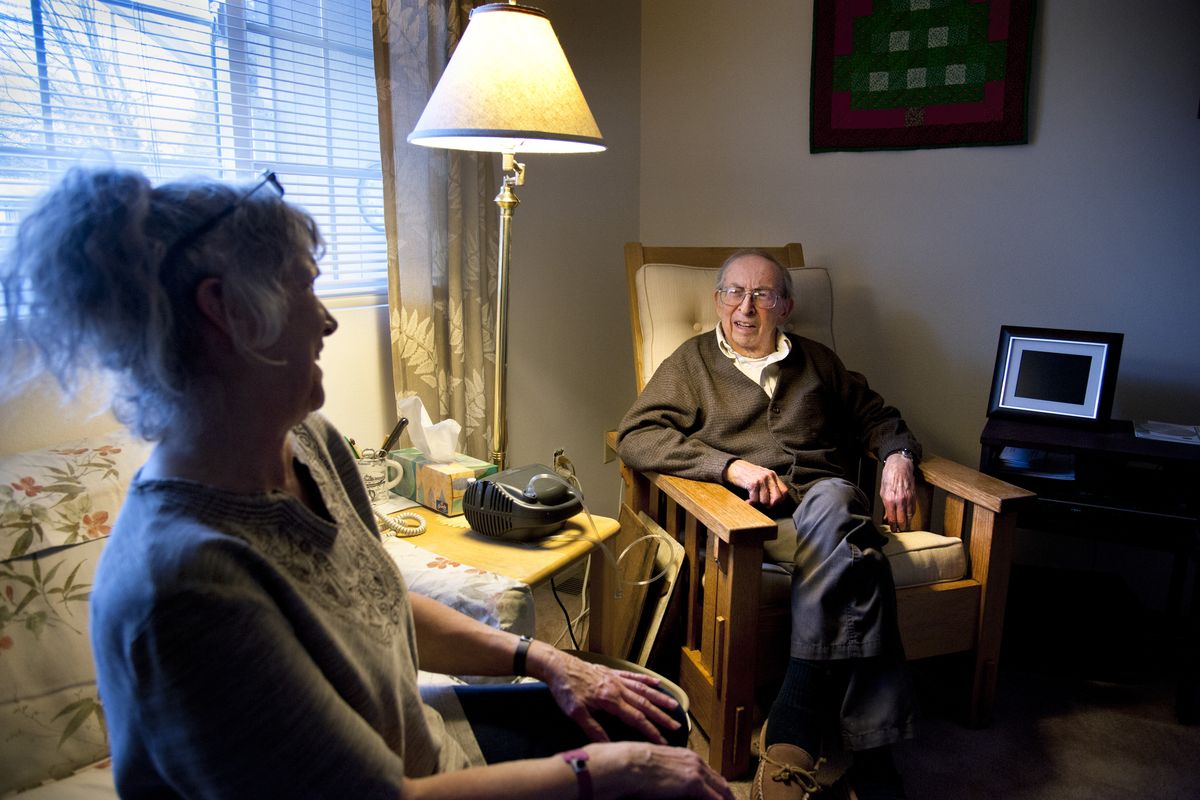This column reflects the opinion of the writer. Learn about the differences between a news story and an opinion column.
Shawn Vestal: Deer Park man’s study rebuts JFK single-shooter finding

Robert Forman was a sociology professor in Oshkosh, Wis., when the Warren Commission report came out in 1964, asserting that a single gunman had killed President John F. Kennedy.
The conclusion did not sit right with him, a feeling that deepened as criticism of the report grew. Eventually, Forman made his way across campus to the anthropology department, where he borrowed a skeleton. He began to examine angles and pathways through the human skeleton; he began to consider bullet pathways and angles; and he eventually came to a conclusion – not about what he thought had happened but what he felt certain had not: a single shooter, firing from the window of the Texas Book Depository.
Forman, who now lives in Deer Park, became one of the voices arguing against the Warren Commission report, which concluded that President Kennedy had been killed by a lone gunman. Forman’s work was cited in magazine articles. He testified before a private committee formed by a prominent challenger of the Warren report. He was one of three experts cited by the New Orleans district attorney when he brought a case in 1969 against men he alleged had conspired with Lee Harvey Oswald – a case dramatized in Oliver Stone’s “JFK.”
“He innocently believed that, with his testimony, they would present evidence so irrefutable that they would overturn the Warren Commission’s findings,” said his daughter, Lucy Jeanne.
Forman, now 89 and with a limited recall of those times, did not have a conspiracy theory about the case. But he is clearly in the camp that believes the full truth of the assassination was never found, or perhaps even pursued aggressively. This camp of doubters is large and various – a majority of Americans in a recent poll said they don’t believe Oswald acted alone. It is a testament to the horror of the assassination and deep strangeness of so much surrounding it that it lives on, for many, as a mystery.
In the 1960s, Forman was a sociology prof at the University of Wisconsin-Oshkosh, with a tendency to go on tangents outside his field, Jeanne said. For example, he published a book on natural methods of controlling food allergies. A Democrat and Kennedy supporter, he became interested in the burgeoning criticisms of the Warren report following its release in 1964.
A few facts were paramount for Forman: The Warren Commission concluded that Oswald’s first shot passed through Kennedy’s neck – without striking bone – and hit Texas Gov. John Connally. But Forman saw a problem. “The fact is,” he wrote, “that this part of the body is a veritable jumble of bones.” Saturday Review magazine, in recapping Forman’s work in a 1970 article, called it a “veritable bony thicket.”
Since no bones were struck by the bullet, he said, there were only a limited number of pathways it could have followed. Using this assumption and the location of the exit wound – in addition to analyzing the lateral and downward angles, the patterns of bone and muscle in the neck area, and details from the investigation – he concluded that the first bullet could not have struck both men, and that someone else had to be shooting, probably from the area often referred to as the “grassy knoll.”
Forman’s typewritten correspondence about the case includes many other skeptics and doubters, including the other expert witnesses who were called by New Orleans District Attorney Jim Garrison in the famed New Orleans trial, later depicted in Stone’s film.
Garrison believed he had uncovered a CIA plot to kill Kennedy. Like so much surrounding the assassination, Garrison’s role is subject to a wide range of views. His Wikipedia entry puts it this way: “Opinions differ as to whether he uncovered a conspiracy behind the John F. Kennedy assassination, but was blocked from successful prosecution by a federal government cover-up, whether he bungled his chance to uncover a conspiracy, or whether the entire case was an unproductive waste of resources.”
One of Forman’s fellow expert witnesses, Cyril Wecht, was a consultant on Stone’s film, but Forman had no role. He said this week that he did not recall the film, though his memory is not what it once was.
There are arguments against those made by Forman and others regarding the bullet’s pathway. Forensic experts have noted that a bullet passing through one body would spin or tumble and change trajectory; in this view you would not expect a bullet to travel a path as straight as a metal rod through one body and into another.
One of the key critics of the Warren report, Bernard Fensterwald, formed a private commission to investigate the assassination along with those of Robert Kennedy and Martin Luther King Jr. Forman testified before it in Washington, D.C., in 1969. He thought the committee might help bring a new level of attention to the case.
“But then nobody picked up on it,” he said. “It’s not like there were headlines.”
Fensterwald and Garrison worked together on the New Orleans case; both men were closely involved in the murky network of people and events that surrounded both the assassination and the subsequent attempts to get to the truth of it.
The subject remained important to Forman all his life. Jeanne gathered some of his correspondence and photographs and documents; stacks of them covered the kitchen table in his Deer Park home. Forman retired and moved with his wife to Colville in 1993 to be near their children here. His wife died in 2004, and he moved to Deer Park.
“He formed his simple report with rock-solid facts and really felt it would make a difference in the national dialogue,” Jeanne said.
